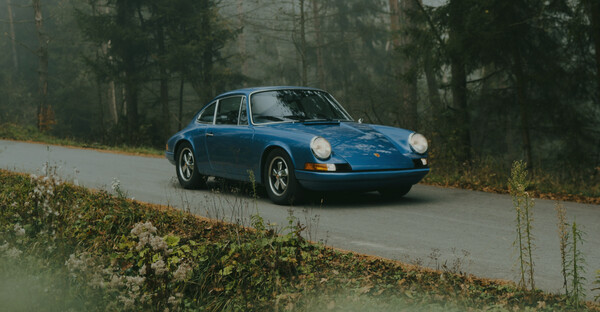Description
"The Renault 4CV: The "Grand Luxe" version of the popular icon of the 1950s The Renault 4CV embodies all the finesse and innovation of the small French saloon cars of the post-war period. Nicknamed "La 4 pattes", this car symbolised the revival of the popular car in France.
The "Grand Luxe" model offered a higher level of finish and comfort than the standard versions, with additional aesthetic details and a more elaborate interior, aimed at drivers in search of elegance and comfort. History and specific features of the model Conceived at the height of the Occupation, the Renault 4CV was developed in the greatest secrecy in the Billancourt workshops.
Lightweight, reliable and with a uniquely rounded design, the 4CV was the first French car to exceed one million units produced, marking its success with families and young drivers. When it came out in 1947, it quickly became the people's car, capable of carrying four people in unprecedented comfort for a model of its size.
Prized for its manoeuvrability and low maintenance costs, it was ideal for both daily commutes and rural escapades. Its lightweight bodywork and mechanical simplicity also enabled this little car to distinguish itself in competition, with notable participations in the 24 Hours of Le Mans and the Monte Carlo Rally in the 1950s. A multi-purpose icon A true symbol of freedom for a post-war generation, the Renault 4CV appealed as much for its versatility as for its charm.
With its soft colours and rounded lines, it is part of a historic automotive heritage that has become a popular model with collectors. This vehicle was purchased in 2019 from the Hautes Alpes region, and is currently stored under canvas in Marseille, where it is regularly driven on short outings. Its Ardennes Green (263) colour is typical of the 1950s and changes from grey to matt green depending on the ambient light.
Technical specifications Model: Renault 4CV Grand Luxe R1062 Year: 1952 Engine: "Ventoux" 4-cylinder in-line 747 cm³ Power: 21 bhp at 4, 100 rpm Transmission: Rear-wheel drive, 3-speed manual gearbox Brakes: Drums on all four wheels Suspension: Coil springs at the front and semi-elliptical leaf springs at the rear Average fuel consumption: 6-7 L/ 100 km Body: Repainted before 2019 in its original colour 263 Ardennes Green Mileage: 82400 kms on the clock Specific equipment and details Front and rear bench seat in period beige curly cloth Original chrome and specific badges Original handles, windows and interior elements, preserved in their period condition for authentic charm.
Jaeger dashboard in chrome finish 2-spoke steering wheel and gear knob in bakelite Original rubber floor covering Door handles Whitewall tyres 6-whiskers grille This vehicle will be delivered with its 2 chrome headlamp caps, original tool kit, a pair of snow chains and a 6-volt battery charger. Recent work The car has benefited from a number of restoration and maintenance works to ensure a pleasant and reliable drive. Here are some of the key work carried out: Painting of the 2 rear wings Overhaul of the engine, with carburettor and ignition adjustment.
Oil change and servicing (20W50 oil) Electrical wiring harness, coil, spark plugs New battery Front suspension wishbone Brake system rebuilt Documentation Registration document: Collection Service history: Invoices available since 2019 Defects Imperfections in bonnet paintwork Fender bend in driver's seat Fender bend of a few centimetres repaired (left-hand rear roof lining) A clock has been installed in the glove compartment hatch, which can be removed easily but the door will need replacing (approx. €60).














